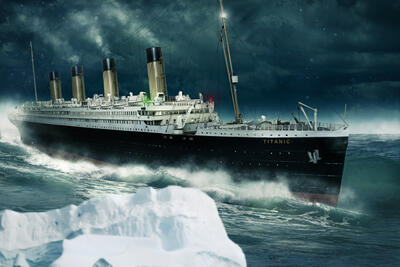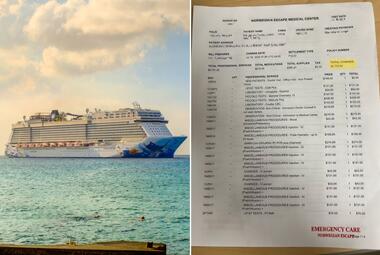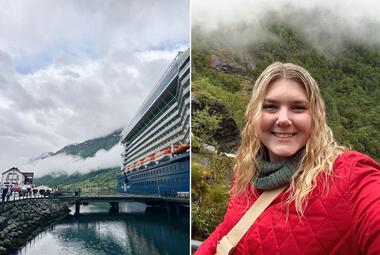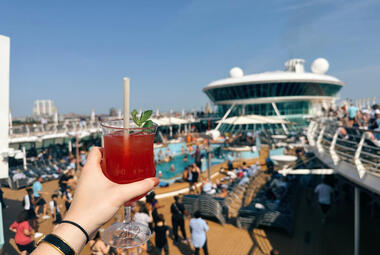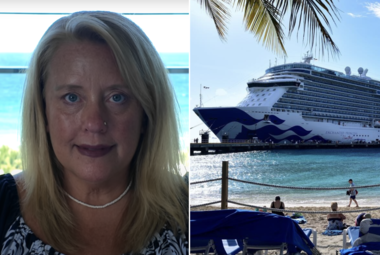On April 10, 1912, RMS Titanic departed from Southampton on what was supposed to be the maiden voyage of a lifetime. After two quick stops in Cherbourg, France and Cobh, Ireland, she began her ill-fated journey across the Atlantic Ocean before plunging below the surface of the freezing waters. The "unsinkable" vessel proved to be just that: sinkable.
When I was 13, my family visited Gatlinburg/Pigeon Forge, Tennessee for spring break, and we got to visit the Titanic Museum. In one of the rooms, you're able to dunk your hand into water that's the same temperature as the water was when the Titanic sank. This, along with the sloping decks, was the most memorable part of the tour. I couldn't fathom being submerged in those waters; I could barely keep my hand in for more than thirty seconds!
When the Titanic hit the iceberg and consequently sank, the Atlantic Ocean was around 28°F (-2°C), which is below freezing. The wreck caused roughly 1,500 out of 2,224 passengers and crew onboard to perish.
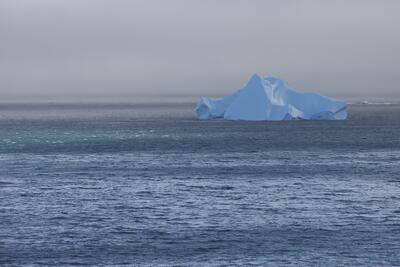
In total, RMS Titanic was equipped with 20 lifeboats that were able to accommodate roughly 1,178 people. Even if all boats had been filled, a little over 50% of those onboard would have died due to lack of space.
As a result, the first International Convention for the Safety of Life at Sea (SOLAS) was formed to help prevent another major incident from occurring by setting safety standards for the construction and operation of passenger and merchant ships.
Some survivors were able to endure the cold waters long enough to be rescued
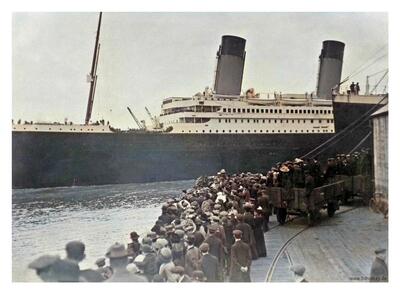
Charles Joughin, the chief baker on the Titanic, claimed that he spent about two hours in the water before he was able to find a lifeboat. Upon being rescued by RMS Carpathia, his only medical complaint was swollen feet. It's believed that he had some alcohol in his system, which could have kept his body calm and prevented him from going into shock.
At the end of the day, Joughin was one of the lucky individuals who was able to survive the sinking of the Titanic. The majority of those who weren't able to make it into a lifeboat succumbed to hypothermia or other cold-related physical ailments hours before aid arrived.
While hypothermia does become a concern in cold conditions, especially when submerged in water, the ability to survive is dependent on factors like accessibility to live vests and the health of the person. It's believed that many perished due to cardiac arrest, with those who were unable to swim having no chance.

When RMS Carpathia finally arrived, they focused their efforts on rescuing those in lifeboats, presuming that those in the water were already dead. In total, they picked up a little over 700 survivors and provided them with shelter and medical care while transporting them to New York, the scheduled final destination for the Titanic.
Read more: What did people on the Titanic eat onboard?
RMS Titanic sank 350 miles off the coast of Newfoundland, Canada in an area dubbed "Iceberg Alley"
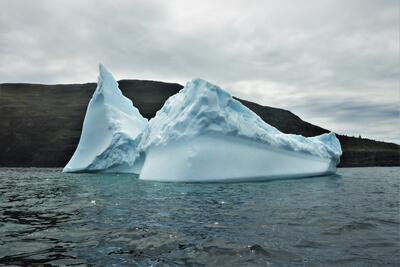
In a place that's notorious for icebergs, you'd assume that the Captain and crew would be extremely vigilant, right? The sinking of the Titanic proves that isn't always the case. In Iceberg Alley, the glaciers from Greenland are usually most present throughout the spring and summer, which is exactly when Titanic's career began (and ended).
By 7:30pm on April 14, 1912, Titanic had received five iceberg warnings from nearby ships. About 3.5 hours later, the Californian radioed to say that they had come to a full stop in a thick field of ice. Less than an hour later, the Titanic made contact with a large iceberg that resulted in her demise.
Today, the Titanic can be found sitting on the ocean floor roughly 12,500 feet below sea level. The bow and stern, which broke apart before sinking, are about 2,600 feet from one another.
Read more: How much was a first class ticket on the Titanic?
Thankfully, there have not been any maritime disasters as deadly since the Titanic

Today's cruise ships are built to withstand all kinds of weather conditions. Moreover, cruise lines actively monitor the weather and work to reroute ships to avoid unfavorable sailing conditions.
Perhaps the most well-known modern-day disaster was the capsizing of Costa Concordia in 2012. On January 13, the vessel departed on a 7-night Mediterranean cruise. Onboard were 3,206 passengers and 1,023 crew members.
A few hours after setting sail, Captain Francesco Schettino purposely chose to veer off the original course and sail close to the island of Giglio, coming into contact with a large rock that left a 174-foot gash in the port side of the hull. As a result, Costa Concordia began to flood and soon lost power, eventually tilting towards the starboard side.

Thankfully, it wasn't anywhere as deadly as the Titanic, as only 32 individuals (compared to about 1,500) lost their lives during the incident. A 33rd life was claimed during the salvaging efforts.
If you have ever wondered why every vessel must conduct a muster drill before departing port, the wreck of the Costa Concordia is why! Before this disaster, the muster drill could happen at any point up to 24 hours after setting sail. Because of this rule, there were roughly 600 guests onboard who hadn't completed the drill when the ship came into contact with the rock.
For those unfamiliar with muster drills, it's essentially a safety drill that's meant to familiarize every person onboard with their assigned assembly stations, as well as other protocols. Some cruise lines have converted to a virtual format, whereas others require everyone to visit their station at the same time. Either way, you shouldn't try and get out of it, as the crew will track you down!
Read more: How Many Cruise Ships Have Sunk?


